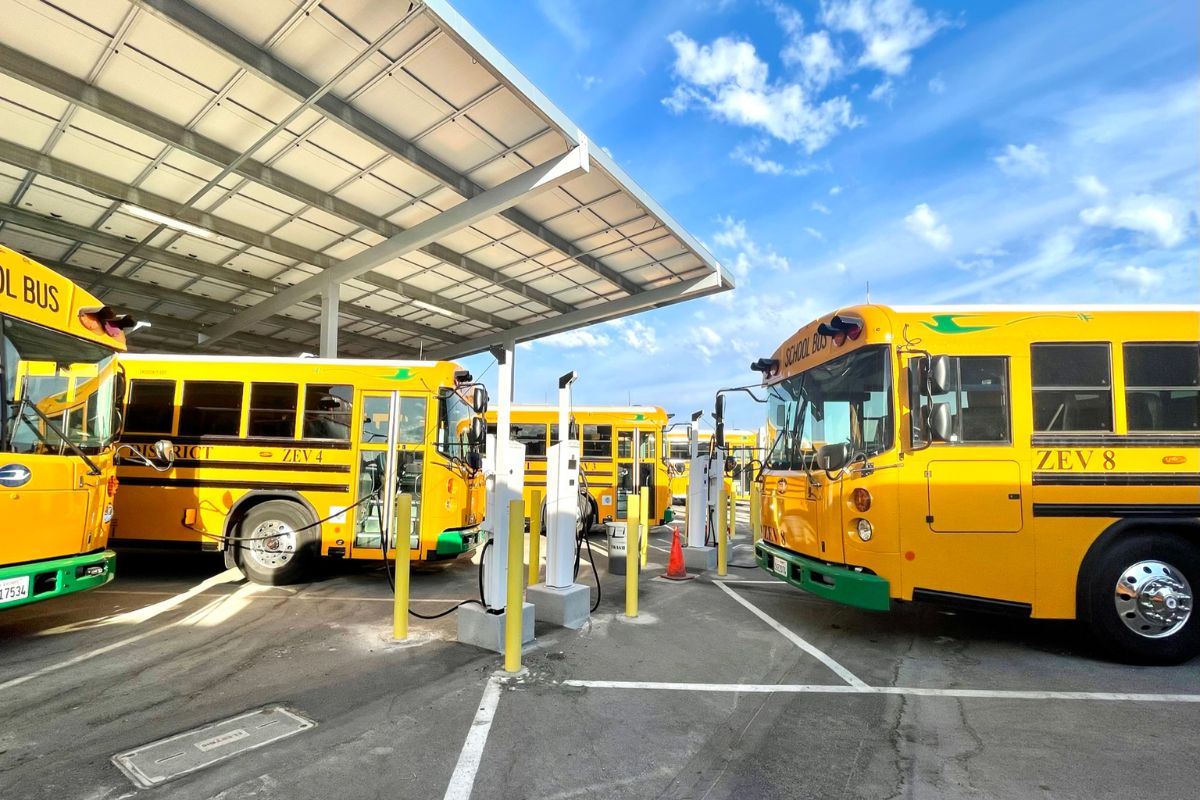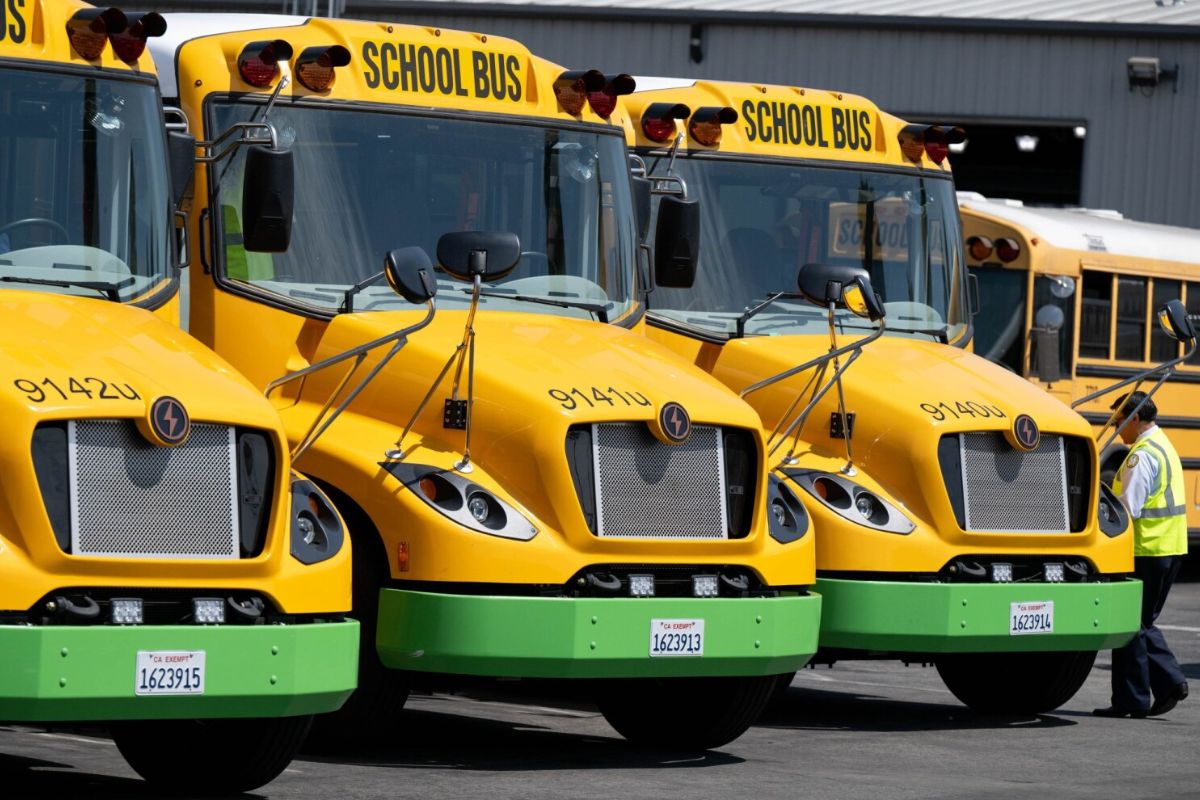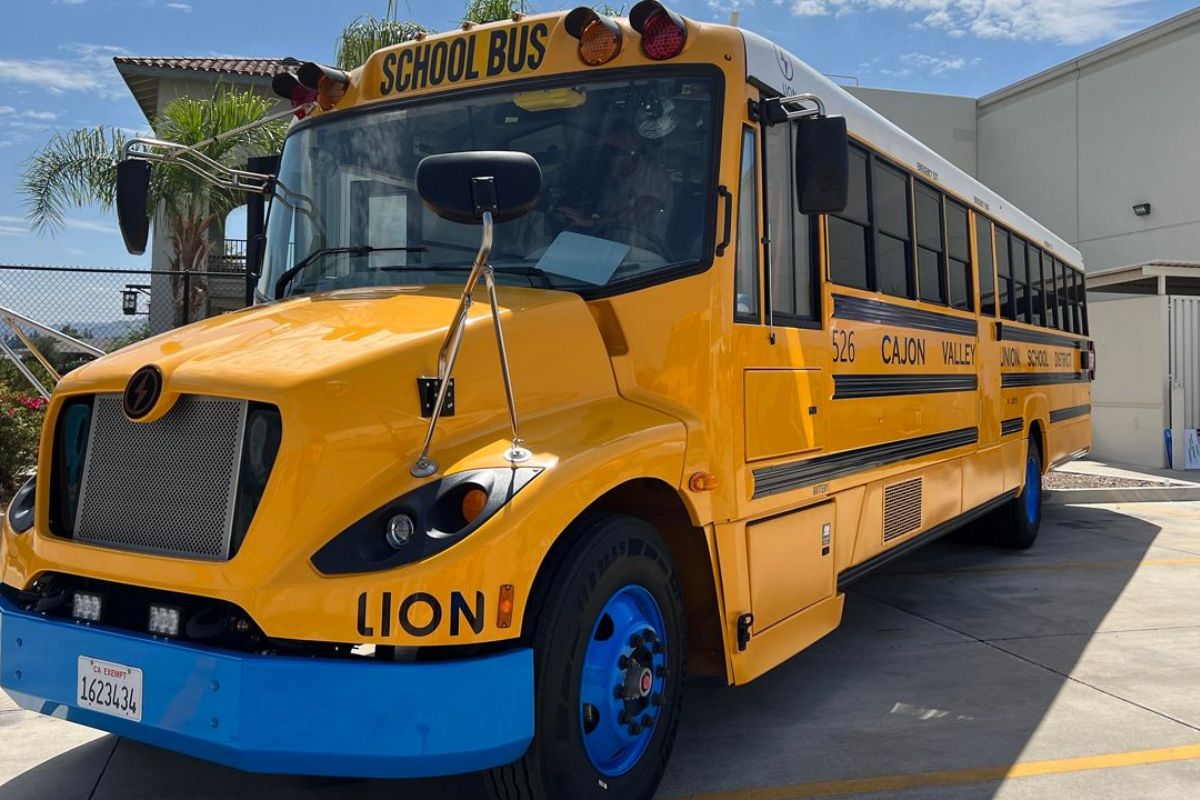California Electrifying Shift Leading the Nation: Imagine California’s green school bus initiative as a seed blossoming into a mighty oak tree, providing shade and sustenance to all who stand beneath it. The state’s electrification journey is not just about buses but signifies a larger movement towards sustainable transportation. As you explore California’s trailblazing efforts in adopting electric school buses, you will uncover the innovative strategies, financial backing, and environmental advantages driving this transformation. Stay tuned to discover why California stands at the forefront of the nation in this vital shift towards greener school transportation.
Key Takeaways
- California leads the nation in transitioning school buses to electric, setting a new standard for sustainability.
- Commitment to electrifying school buses by 2035 aligns with proactive states like New York.
- Prioritizing youth health through cleaner air and reduced emissions showcases environmental leadership.
- Accessing funding sources like HVIP and federal allocations supports the shift to electric buses efficiently.
California’s Pioneering Legislation
California’s groundbreaking legislation on school buses sets a national standard for environmental responsibility by requiring all new buses to be electric by 2035. This mandate aligns California with other environmentally proactive states such as Connecticut, Maryland, Maine, and New York. By spearheading this initiative, California is paving the way for a greener future in student transportation.
Electric school buses offer numerous advantages over traditional diesel buses. They produce zero tailpipe emissions, reducing harmful pollutants that affect both the environment and children’s health. Additionally, electric buses are quieter, providing a more peaceful ride for students and reducing noise pollution in communities.
The transition to electric school buses also contributes to the state’s efforts to combat climate change. By eliminating the use of fossil fuels in school transportation, California is reducing its carbon footprint and moving towards a more sustainable future. This legislation not only benefits the current generation of students but also ensures a cleaner and healthier environment for generations to come.
California’s Electric School Bus Leadership
Leading the nation in electric school bus adoption, California currently boasts over 2,078 committed electric buses, with around 34% already operational. This significant shift towards electrification is not only environmentally friendly but also economically beneficial. Here are three key aspects of California’s electric school bus leadership:
- Environmental Impact: By transitioning to electric buses, California is significantly reducing greenhouse gas emissions and improving air quality, creating a healthier environment for students and communities alike.
- Cost Savings: Despite the estimated $5 billion transition cost, the long-term savings from reduced fuel and maintenance expenses make electric buses a cost-effective choice in the state’s budget, showcasing California’s forward-thinking financial planning.
- Technological Advancements: California’s embrace of electric school buses demonstrates a commitment to innovation and sustainability, setting an example for other states to follow in harnessing the latest technological advancements for a greener future.
Funding Sources
Funding for electric school buses in the state of California is sourced from various programs and initiatives, including the EPA’s Clean School Bus Reimbursement Program and California’s Hybrid and Zero-Emission Truck and Bus Voucher Incentive Project (HVIP). These funding sources play a crucial role in promoting the adoption of eco-friendly transportation solutions within the state. Additionally, California has received substantial support from the Biden Administration’s Bipartisan Infrastructure Law, with over $900 million allocated to bolster the transition to electric school buses.
The EPA’s Clean School Bus Reimbursement Program provides financial assistance to replace old diesel school buses with new electric models, reducing harmful emissions and improving air quality around schools. On the other hand, California’s HVIP offers incentives to school districts and transportation agencies to invest in hybrid and zero-emission vehicles, further encouraging the shift towards sustainable transportation options. With these funding sources in place, California is paving the way for a greener and more environmentally conscious school bus fleet, setting a positive example for the rest of the nation to follow.
Benefits of Electric School Buses
By transitioning to electric school buses, school districts can expect significant long-term cost savings, reduced greenhouse gas emissions, and improved public health outcomes.
Here are three key benefits of electric school buses:
- Cost Savings: Electric buses have lower operating costs than traditional diesel buses. With fewer moving parts and no need for expensive diesel fuel, schools can save money on maintenance and fuel expenses over the lifespan of the bus.
- Environmental Impact: By switching to electric buses, school districts can significantly reduce their carbon footprint. Electric buses produce zero tailpipe emissions, helping to combat climate change and improve air quality for students and communities.
- Healthier Communities: Eliminating diesel emissions from school buses leads to cleaner air, benefiting the health of children and the broader community. Reduced exposure to harmful pollutants can lower rates of asthma and other respiratory illnesses, promoting overall well-being for everyone involved in the school transportation system.
Also Read: City Vibes The Thrill of Urban Beach Volleyball!
California’s Commitment and Comparison
California sets a new standard in environmental responsibility by committing to electrifying its school bus fleet, paving the way for a cleaner and healthier future for its youth. While some may argue that California’s 2035 deadline is less ambitious than New York’s 2027 target, the state’s dedication to transitioning to electric school buses is a significant stride towards reducing emissions and improving air quality. California’s commitment to sustainability not only benefits its students but also sets an example for other states to follow suit.
By prioritizing the health and well-being of its youth, California showcases its leadership in combating climate change and promoting green initiatives. This commitment not only aligns with the state’s progressive values but also demonstrates a proactive approach to addressing environmental challenges. Comparisons aside, California’s proactive steps towards electrifying its school bus fleet exemplify a forward-thinking and environmentally conscious mindset that will undoubtedly have a positive impact on future generations.
Conclusion Of California Electrifying Shift Leading the Nation
California is setting the standard for green school buses nationwide. With pioneering legislation, strong leadership, and innovative funding sources, the state is committed to reducing emissions and improving air quality for students. The benefits of electric school buses are clear – cleaner air, quieter rides, and cost savings in the long run. California’s electrifying shift towards sustainable transportation is not only impressive, but also essential for a healthier future for our children.
Our Reader’s Queries
How many electric school buses are in California?
California currently has around 600 electric school buses on the roads, making up approximately 3% of the total fleet. An additional 1,300 zero-emission buses are in the pipeline, as confirmed by the California Air Resources Board.
Which state has the most electric buses?
As of December 20, 2023, California boasts the highest number of all-electric buses nationwide, with over 650 active vehicles. These buses have collectively covered more than 11 million miles on fully electric power.
Which country has the most electric buses?
China Reigns Supreme in Electric Bus Market with 200,000+ Vehicles, Shenzhen Takes the Lead with 16,000 – Others Vying for Second Place.




